Abstract 12/2014
Table of content
Bryniarska Zofia, Puławska Sabina – Transport accessibility of suburban zone of Krakow
Mateusz Szarata – Selected approaches for modeling dynamic bus lane
Katarzyna Nosal – Selected results of the survey on the travel behaviours and preferences of the Wroclaw Municipality employees and customers, carried out for the mobility plan implementation
Urszula Duda, Wiesław Starowicz – Short-term park zones kiss and ride
Łukasz Franek, Tomasz Kulpa – Conclusions from researches on allowing two-way bicycle traffic on one-way streets and implementation of the Advanced Stop Lines at junctions
Abstracts
Bryniarska Zofia, Puławska Sabina
Transport accessibility of suburban zone of Krakow
Abstract: The suburban zone around large cities becomes increasingly attractive area to live and invest for city inhabitants. At the same time, residents of the suburb area use city resources like jobs science and education institutions, administration services as well as health protection or shopping. The ties between these areas become stronger and stronger. The efficiency of this relationship depends on possibility of mobility provided not only by private cars but most of all by public transport. Public transport – bus transport – in the suburban area around Krakow is organized on the basis of agreements with 15 neighbouringmunicipalities situated inside this zone. In addition, authorities of the Małopolska province co-finances rail connections on 5 rail lines. This article attempts to assess the transportation accessibility of municipalities located in the suburban area of Krakow. Public transport accessibility can be described using a number of factors, including distribution in the space, number of inhabitants, which are addressed with transportation offer, the period of time when the offer is available, travel time, level of information and costs of trips. These factors allow to formulate an assessment of spatial, demographic, temporal, functional, legal, technical, economic and tariff accessibility. The analysis of transport accessibility is curried out for 15 municipalities of the suburban area of Krakow and 6 cities located in their area.
Key words: public transport, accessibility, bus transport service, agglomeration railway
Mateusz Szarata
Selected approaches for modeling dynamic bus lane
Abstract: Dynamic bus lane (DBL) could be used as a complementary solution for the separated bus lanes. DBL are usually applied on sections, where bus traffic flow doesn’t justify implementation of a typical, separated bus lane. Assessment of the potential benefits of the DPA requires a series of analytical analyzes. Common approach is based on traffic models, which are used to estimate DBL effectiveness and evaluate its comparison with other forms of prioritization for public transport. The paper presents main assumptions and limitations associated with application of various traffic models. In the literature different approaches to traffic modeling methods are to be found – some authors use analytical models, others work with microsimulation traffic models, which were considered more appropriate for presented topic. They allow to take into consideration many factors and model impact of different scenarios during simulation process.
Keywords: traffic model, bus lane with intermittent priority, bus lane, public transport priority
Katarzyna Nosal
Selected results of the survey on the travel behaviours and preferences of the Wroclaw Municipality employees and customers, carried out for the mobility plan implementation
Abstract: Wrocław is the example of a city which activities are aimed to reach sustainable transport system and to create urban space attractive and friendly to its inhabitants. To achieve this goal many projects have been realised for many years to improve quality of public transport services and conditions of pedestrians and cyclists traffic. In 2013 the Wrocław City Council decided to accept the Wrocław Mobility Policy indicating mobility plan implementation for large companies and institutions as one of tools shaping sustainable urban mobility. To encourage the public and private sector to implement mobility plans and to improve travelling by green transport between municipal buildings, the authorities decided to prepare and implement first mobility plan in the city. The initial phase of the project consisted in analyze of the existing situation, including the study of the employees’ and customers’ travel behaviours and preferences. This article presents selected results of the survey carried out in this field.
Keywords: sustainable mobility, travel behaviours, mobility management, mobility plan, Wrocław mobility policy
Urszula Duda, Wiesław Starowicz
Short-term park zones kiss and ride
Abstract: The way to avoid problems caused by increased transport traffic is suitable shaping urban area, especially in the neighborhood of big traffic generators. One of the elements of well shaped space close to the facilities generating big traffic is a drop off zone, so called kiss and ride zone. It is separated zone devoted strictly for short-term parking of cars discharging passengers who are driven to this specific point. In the article main aims of functioning of kiss and ride system have been presented and an attempt to define of kiss and ride zone together with stocktaking of its basic elements has been undertaken. On the base of available examples of kiss and ride zones completed with own experiences their characteristics were compared and combined which allowed to describe division of kiss and ride zones regarding to different criteria relating to its use, spatial arrangement and geometrical features as well as character of facility to which they serve. Also selected examples of organization of kiss and ride zones operating in different cities in the world have been presented.
Key words: kiss and ride system, K+R, transport behavior, transport hub
Łukasz Franek, Tomasz Kulpa
Conclusions from researches on allowing two-way bicycle traffic on one-way streets and implementation of the Advanced Stop Lines at junctions
Abstract: This paper presents conclusions from the researches taken in the spring of this year in four Polish cities (Cracow, Gdańsk, Warsaw and Wroclaw), concerning potential conflicts between cyclists and other road users, when two way cycling is allowed on one-way street. Researches were also conducted on intersections with the Advanced Stop Line. The study was undertaken with initiative and on request of the Ministry of Infrastructure and Development, which is currently processing a legislative changes relating to cycling. Cycling in Polish cities is increasing, mostly due to the new infrastructure facilities, such as a construction of new bicycle paths and lanes, new bicycle parking lots, physical traffic calming devices, as well as allowing of two-way traffic for bicycles on the one-way streets and creating the Advanced Stop Lanes. A lot of strong emotions among engineers, officials in charge of traffic management and cycling activists, have aroused about the last two solutions mainly due to the ambiguous legal provisions, but also the lack of safety research conclusions.
To meet these expectations observations were prepared and carried out within two working days on selected polygons using video technology. A report from research was prepared for the Ministry.
Key words: cycling traffic, traffic engineering, urban traffic

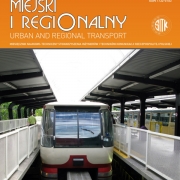 SITK RP
SITK RP 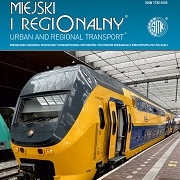 SITK RP
SITK RP 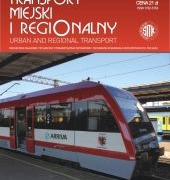 SITK RP
SITK RP 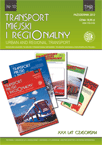 SITK RP
SITK RP 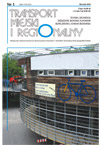 SITK RP
SITK RP 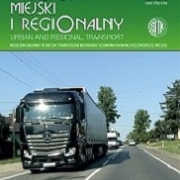

 SITK RP
SITK RP SITK RP
SITK RP